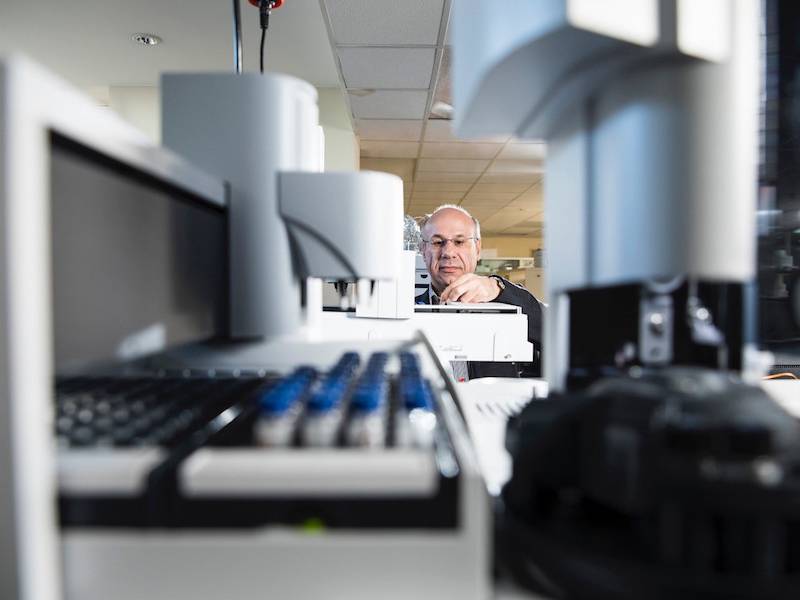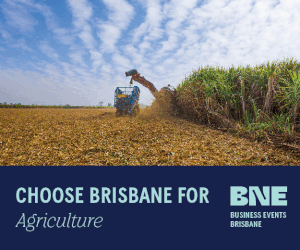Turning Agricultural Waste into Multi-Million-Dollar Industries in Australia

Professor Vincent Bulone (cover photo), Research Director of the Fight Food Waste CRC at the University of Adelaide.
Australian-based researcher Professor Vincent Bulone is working to transform agricultural waste into high-value products – sunscreen from mushrooms, high-tech materials from Brussels sprouts and potentially new cures for diseases.
When an apple is bruised during harvest or a potato is damaged by frost, it’s usually headed for compost, animal feed or landfill, or will simply be left in the field. In Australia, up to 25% of all fresh produce never leaves the farm, and food waste costs farmers over $2.8 billion annually, according to the Fight Food Waste Cooperative Research Centre.
Professor Vincent Bulone, Research Director of the Fight Food Waste CRC at the University of Adelaide, is on a mission to turn that waste into high-value commercial products that could create new revenue streams, jobs and businesses – and potentially cure diseases with his world-leading research.
The French-born researcher and his colleagues are working to identify valuable new molecules in fruits, vegetables and other agricultural waste that can be extracted to produce various products. They are also improving existing methods to more efficiently extract molecules already known to be valuable.
“We are trying to use as close to 100 per cent of the waste as possible, to derive a whole range of products with commercial value from a whole range of molecules that we extract from the same crop,” says Bulone.
“There are other centres around Australia that are focused on deriving food products from biomass, but they are more specialised. Our approach is to be as broad as possible.”
Compounds from biomass such as potatoes, cherries, mushrooms and waste streams from the brewing industry could be turned into products including pharmaceutical and skincare products, health supplements, health-promoting foods and drinks, bioplastics and high-performance materials. Initially focusing on South Australia, Bulone believes this could generate over $100 million a year for the state’s economy.
“The focus on applied product development and its web of local, national and international partners will create spin-off companies and jobs to commercialise new, high-value products from existing waste streams,” he says.
These products will also be biodegradable or recyclable, making them safer for humans and the environment.
.jpg)
Grape growing is a key part of South Australia's agricultural offering with the state producing 80 percent of Australia's premium wine, including the world-famous Penfolds | Credit: Tourism Australia
Expanding Australia’s agricultural advantage
To advance this research and quickly translate it into real-world solutions that could have a global impact, Bulone established the Research Consortium Program for Agricultural Product Development in July 2019, funded by the South Australian Government. This four-year program brings together 18 South Australian agricultural and food businesses, national and international academic institutions, and industry partners, and is at the forefront of Australian research into agricultural waste conversion.
A small number of prototypes have been developed, including a transparent film made from mushroom stalks that can be used to make sunscreen and a coating for outdoor furniture.
“Australia has a very strong agricultural industry; it’s one of the key drivers of the economy,” says Bulone. “There is huge potential to expand and diversify activities, we just have to think a little bit out of the box … and that’s where cooperation across sectors is very important. The role of the Consortium is to demonstrate to different parties what can potentially be done with their biomass.”
In one exciting area, Bulone’s research is world leading: working with colleagues at the University of Adelaide and overseas, he is looking at how microbial carbohydrate biosynthetic enzymes can be targeted to kill pathogens that cause diseases in humans, animals and plants. This opens up a number of new possibilities, and Bulone is working with Australian cancer researchers to investigate how some of these findings could be applied to help stop the growth of cancer cells.
Bulone has also identified compounds that kill a particular group of pathogens that devastate crops and fish in aquaculture and damage natural environments worldwide. Thanks to grants from the Australian Research Council and several European organisations, Bulone and his colleagues are developing methods to prevent the diseases caused by this pathogen.

Adelaide (South Australia), where Professor Bulone is based, has a strong offering across a number of other knowledge sectors, including the medical and space industries, making it an ideal association conference destination | Credit: South Australian Tourism Commission
The power of collaboration
Partnerships and collaboration across borders, industries and academic disciplines have been crucial to Bulone’s research, and he and his colleagues in the Research Consortium Program for Agricultural Product Development are collaborating with researchers in Australia and Europe as well as working with partners across the entire value chain, from growers through to companies that can develop the final products.
“It’s all about complementing each other and creating synergy beyond the borders of disciplines, and we all try to work on one common goal,” he says.
Crucial to the success of the research so far has been support from the Australian and South Australian governments, primarily in the form of research grants.
“Australian research in this area is very strong and very innovative,” says Bulone. “What we’ve been missing is the connection with industry. This is changing now at a significant pace.”
After working at universities in France, Norway and Sweden, Bulone moved to Australia in 2015. He says Australia’s strong standing in scientific research makes it an attractive destination for researchers – as well as for supporting collaboration through international conferences and other scientific meetings.
“We have an excellent network of top-level scientists in the country,” says Bulone. “It’s amazing. We have a relatively small population but there is a concentration of world-leading scientists across a whole range of disciplines, and this significantly contributes to Australia’s attractiveness as a destination for international conferences.”
Discover more about Australia’s food and agribusiness industry at australia.com/businessevents.










